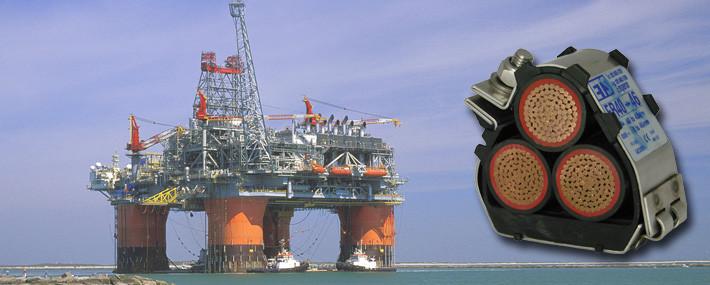The Oil and Gas industry spends millions of pounds every year to ensure the very highest levels of health and safety are met, therefore it would seem extremely remiss if a significant aspect was frequently neglected, as with the case of cable cleats.
The key issue surrounding cleats and their use in this type of environment is that their importance is frequently underestimated. Therefore, instead of being treated as a vital element of any cable management installation they are frequently lumped in with the electrical sundries.
What this means in practice is that even if suitable products are specified, they are still seen as fair game for cost-cutting when it comes to companies seeking to keep within tight budgets. And this practice, if allowed to continue unchecked, could lead to the wholly unnecessary loss of a life.
There is absolutely no doubt that by eradicating this practice this danger can be drastically reduced, but the big picture also needs to be addressed to ensure consistence practice across the board. The only way of achieving this is by educating contractors, specifiers – in fact, the offshore industry as a whole – as to the true importance of cable cleats. And to do this, we need to go back to basics.
In a nutshell, for any electrical installation to be deemed safe, cables need to be restrained in a manner that can withstand the forces they generate, including those generated during a short circuit. And this is exactly what cable cleats are designed to do. Without them, the dangers are obvious. Costly damage to cables and/or cable management systems, plus the risk to life posed by incorrectly or poorly restrained live cables.
Manufacturer Driven Market
One of the major contributing factors behind the current, and somewhat confused situation, is that although cable cleats are recognised by industry regulators, having their own European standard (EN50368) and an International one (IEC61914 Ed. 1) expected soon, these are simply advisory guidelines rather than obligatory regulations.
With no golden guideline to follow, the market is very much manufacturer driven. Different companies manufacture to different standards and so the market is something of a mish-mash of products of varying quality. Add to this the facts that the majority of cleats are manufactured as add-ons by companies that specialise in other areas, and that some of today’s cleats are not even short-circuit tested prior to being put into production, and it is easy to see why their importance isn’t fully understood, let alone appreciated.
In the long-term the whole situation needs to be resolved through a process of education and agreement involving manufacturers, regulators, specifiers, contractors and installers. But, what of the short-term? What should be being done in order to ensure corners are not cut and safety sacrificed when it comes to cable cleats? To answer this, installations need to be split into two categories – new and old.
New Installations vs Old Installations
In the case of new installations, the process needs to begin during the design stages. Ideally, this would commence with the forces between cables being calculated so as to ascertain the type and strength of the cleat required. A number of other factors then need to be taken into account, including physical performance, mounting surface and the environment in which the installation will be situated. Only when this has all been tested and measured can the designer be confident of specifying the correct cleat for the installation.
Old installations meanwhile pose a completely different set of problems. Many will have been installed before the introduction of any related standards, while those that came later may still not be suitable. Therefore, it’s advisable to review all cabling in such installations to ensure it is safely restrained in relation to today’s requirements.
Understanding the need for cleats and the processes involved in their correct specification is though only half the story. Cleats themselves come in a variety of sizes and types and it’s important to understand this variation in order to ensure they are correctly chosen.
Third Part Certification for Cable Cleats
Perhaps the simplest way of doing this is by ensuring the product comes with suitable third party certification that it can withstand the forces it claims to – this would come in the form of a short circuit testing certificate.
Additionally, levels of cable protection can be enhanced by selecting products with Cat 2 passes rather than Cat 1. What this means, is that the cable would be guaranteed to still be intact and operable after a short circuit, as opposed to just the cleat.
If you look at this prescribed course of action from a budgeting point of view, it is fair to say that certain initial costs would be increased. But if you consider the kind of sums involved, in terms of time, materials and manpower, in replacing an entire cable management system due to a short circuit occurring and causing irreparable damage it’s easy to see the point of the additional expense.
And, finally, when you also take in account the effects of improving health and safety levels, there surely can be no argument against ensuring correct cleating practice?
As UK distributors of Ellis Patents cable cleats, we have a range of cleats that are used extensively in offshore environments, all of which are comprehensively tested and certified prior to sale. Please contact us for details.
If you found this article helpful or interesting, please share it!














